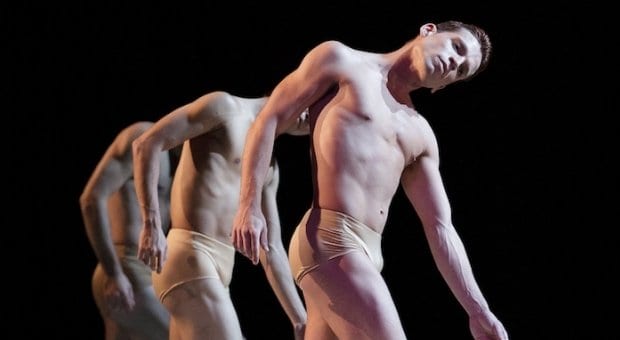Aretha and Annie had a bone to pick when they proudly proclaimed that “Sisters Are Doin’ It for Themselves.” The 1985 girl-power anthem tackled the long-held trope that behind every great man, there had to be a great woman. Though the phrase had its origins in feminist ideology, as Lennox and Franklin hint it had less to do with acknowledging women’s contributions than gently keeping them in the background.
This dynamic is especially common in the art world. Diego Rivera and Frida Khalo, Yves Tanguy and Kay Sage, Christo and Jeanne-Claude; all of them couples where the woman achieved considerably less recognition than her partner, despite being equally if not more talented. For his current work, choreographer Peter Quanz takes on another of these iconic artist pairs, sculptors Auguste Rodin and Camile Claudel.
“In 19th-century Paris, women couldn’t gain education, access materials or get exhibitions,” Quanz says. “Claudel’s only way to get notoriety was to be associated with Rodin. She needed the relationship to be noticed, and he needed the inspiration she brought him. But she suffered through the whole thing because she was never getting credit for her work.”
Quanz first stumbled on their story in Paris at the age of 19 when he made a trip to the Rodin Museum. He found a deep connection with Claudel’s story of being in love with an older artist who was stealing her ideas. When he was offered the chance to make a full-length work for Les Grands Ballets de Montréal 12 years later, in 2011, he decided to finally tackle the story.
Rodin/Claudel follows their tumultuous romance, from the passionate spark ignited by their shared passion for sculpting through the latter’s downward spiral into poverty and mental illness. Quanz’s company of 36 dancers includes a team of 12 statues who appear nearly nude, both referencing the artists’ works and flaunting the company’s stunning physiques.
“In any relationship between two artists, it’s difficult to have the kind of ego and self-criticism needed to be able to support another person in their work,” Quanz says. “It’s incredibly difficult dealing with the competition and the personal costs of creation. I’m perpetually single, and I think one of the costs of my creation is relationships. I focus on my work so much, it’s very difficult to have a sort of normal life with this kind of creative output.”
Les Grands Ballets Canadiens de Montréal
Rodin/Claudel
Thurs, March 27–Sat, March 29, 8pm
NAC Southam Hall
53 Elgin St
nac-cna.ca


 Why you can trust Xtra
Why you can trust Xtra


